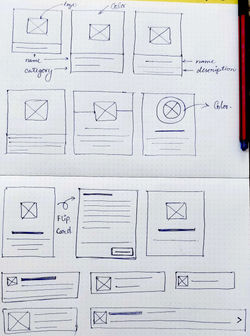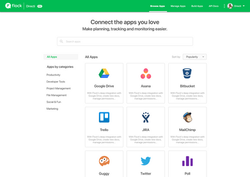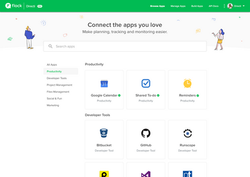Initial Research
Before start working on anything, it is necessary to understand the feature in and out. It helps to empathize with users and deciding the scope of the product.
The initial process starts with talking to people, how they communicate with other team members on Flock and why there is a need for mailing lists.
Understanding Flock Communication
In Flock, people communicate with others through two ways, either one on one chat or in a channel. Channels on Flock is where the real magic happens! Team members use channels for departments, small teams, and projects to keep everyone in the loop.
Understanding Mailing list
A mailing list is a list of emails and names of individuals to send emails to many recipients.
In organizations; people use mailing list in different departments for different purposes. This includes HR, IT, Admins for the announcement. Teams use for project discussions. Sales and marketing for sending emails to target users.
Need of mailing lists
From past many decades, people use emails as a primary source of official communication, but in past few years, the trend has changed. Now people communicate more on chat platforms like Slack, Hangout chats, Flock, etc.
Still, emails have advantages over chat, and people prefer emails for essential communication. Due to the nature of chats and limitations, mailing lists are still popular and important part of any organization.
Work | Flock App Store

Flock App Store
Connect the apps you love.
Redesigned the existing Flock app store to meet the updated requirements. Took initiative along with the Product Manager to improve the experience of the existing app store. This included interactions and final UI.
Goal
Our major goal was to improve the discovery of apps in app store. Apart from that our eyes were on improving the number of installs per team and increase the ratio of Installs from App Store/ Visits to App Store.
What is Flock app store?
The App Store provides a platform to integrate your favorite tools directly into Flock, taking away the hassle of switching between multiple apps at work.
Initial Research
Initial research started form evaluating existing app store and finding out the problem areas. The time when first Flock App Store designed, it was very minimal. There were very few apps and integrations to showcase in the app store. Now Flock has reached a level where there are more than 50 apps in his kitty to showcase.
In any app store, it is very necessary for a user to find the relevant apps. We did small UT with a batch of Flock users to understand the behavior of searching app.

Old Flock App Store
Research Insights
After doing the user testing and discussing with a bunch of users we got following helpful insights.
• It was difficult to find relevant apps in app store.
• Many users searched for an app through Ctrl+F command.
• It was difficult to find an app because of too much color noise.
• They were not able to sort apps by name.
• Every time they come to the app store, they don't know what apps are
new.
• They were confused which apps are already installed.
• Most of the apps were new to them that they didn't have any idea what
those apps are.
We found that there are three kinds of personas who comes to the app store with different mindsets.

After primary research, I did some secondary research by looking into other app stores available on the internet. I did the competitive research on existing app stores. These included Play Store, Apple App Store, Slack, Asana, Facebook and some more.
Reason for conducting competitive research was to get the rough idea of how other players have already set the mental model for users.
Other app stores screenshots
 |  |  |  |  |
|---|---|---|---|---|
 |  |  |  |
Based on different feedbacks that we got from the users, we wrote few job stories to go further in design.
Job Stories
Devashish Sharma
Engineering Manager
Use Flock, Github and other dev tools
When I am away from the desk or not looking at the developer tools, I want to install GitHub app know the activities like commits, pull requests, bug reports, errors from the Github, So I can assign things to others and get things fix fast and at the same time be in the loop.
Christopher Dsouza
Marketing Manager
Use Flock, Facebook, Twitter, Mail Chimp etc.
When anybody mentions on the facebook page or on twitter handles or any of the marketing channel, I want to install some marketing apps to get all the notifications at one place. So I can take actions on them.
After defining the job stories, we started finding the different solutions to done specific jobs. For the discovery of apps, we came up with different solutions like search bar, categorization of apps, sorting of apps, Showing other important info, Trending, and popular apps section, social validation etc.
Finally keeping the level effort and availability of devs into consideration, we decided to prioritize and divided the solutions into different versions.
In the initial version, we picked up the most important features based on job stories. This included search bar, categorization of apps and sorting along, Apps info with the UI cleanup.
Search:
When user comes with an app in his mind, he looks for a search bar, where he can directly search the required app. Search bar was must to have feature in app store.

Categories:
When user is looking for apps to fulfill his requirements, they need some keywords which can lead him to the relevant apps. These keywords are sometimes called as categories. These categories give a direction to the user to choose the relevant apps.
Flock has more than fifty apps in his app store. Most of the apps are for developers community. Other apps were falling into different categories. To decide what app should come to which category, I did closed card sorting to create the best categories.
For digital card sorting, I used Optimal Workshop.
 |  |
|---|---|
 |  |
 |
Card Sorting Data Analysis
Sorting:
We decided to provide sorting options for users to sort apps by popularity, recency and alphabetically (A-Z). These sorting options will provide flexibility for user to search apps accordingly.
Request App:
We provided an option to request app if required app is not available in the app store. This really helps us to decide what apps need to pick up in next set of the product sprint.
App Info:
We wanted to provide dedicated page for each app, where user can see all the important info about the app, installation guide, and configuration settings. Due to the amount of effort it required I had to come up with the solution where we can provide sufficient info in minimal effort.
We worked on the app info copies to make it short and crisp. Along with that, we tried different variations to visually represent the info.

App Card Options
I tried multiple cards styles to come up with the final app card.
 |  |
|---|---|
 |
Card design explorations
After exploring multiple card designs, I tried to put these cards in screens. This gave us a better understanding of cards how its looking. We showed these mocks to a couple of users to get some feedbacks.
 |  |
|---|---|
 |  |
 |  |
 |  |
 |  |
 |  |
 |  |
Card variations in mocks

Final App Card
Apart from this, there are multiple scenarios which need to take care of. Scenarios like; if user is not logged in, if user has already installed the app, If app is not installed, if more info required etc.

Final App Store Designs
 |  |
|---|---|
 |  |
 |  |
Final App Store (Illustration credit - Sougandh Radhakrishnan Flock)